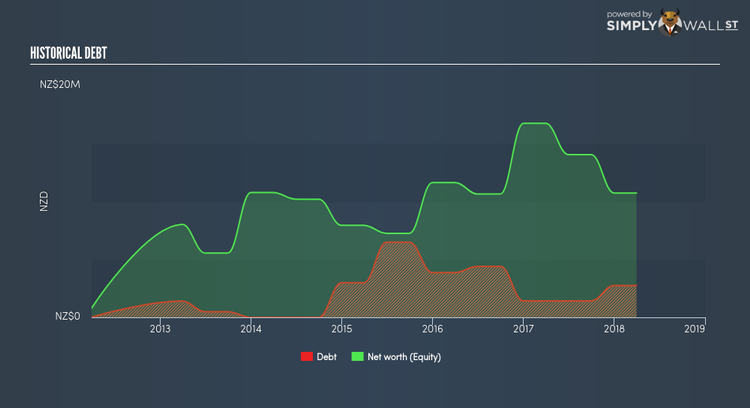What You Must Know About SeaDragon Limited’s (NZE:SEA) Financial Strength

SeaDragon Limited (NZSE:SEA) is a small-cap stock with a market capitalization of NZ$18.05M. While investors primarily focus on the growth potential and competitive landscape of the small-cap companies, they end up ignoring a key aspect, which could be the biggest threat to its existence: its financial health. Why is it important? Given that SEA is not presently profitable, it’s crucial to understand the current state of its operations and pathway to profitability. Here are few basic financial health checks you should consider before taking the plunge. Though, I know these factors are very high-level, so I’d encourage you to dig deeper yourself into SEA here.
How does SEA’s operating cash flow stack up against its debt?
Over the past year, SEA has ramped up its debt from NZ$1.43M to NZ$2.76M , which is mainly comprised of near term debt. With this increase in debt, SEA’s cash and short-term investments stands at NZ$1.01M , ready to deploy into the business. Moving onto cash from operations, its operating cash flow is not yet significant enough to calculate a meaningful cash-to-debt ratio, indicating that operational efficiency is something we’d need to take a look at. For this article’s sake, I won’t be looking at this today, but you can assess some of SEA’s operating efficiency ratios such as ROA here.
Can SEA pay its short-term liabilities?
With current liabilities at NZ$3.82M, it seems that the business has not been able to meet these commitments with a current assets level of NZ$3.11M, leading to a 0.81x current account ratio. which is under the appropriate industry ratio of 3x.
Can SEA service its debt comfortably?
With a debt-to-equity ratio of 25.70%, SEA’s debt level may be seen as prudent. SEA is not taking on too much debt commitment, which can be restrictive and risky for equity-holders. Investors’ risk associated with debt is very low with SEA, and the company has plenty of headroom and ability to raise debt should it need to in the future.
Next Steps:
SEA’s cash flow coverage indicates it could improve its operating efficiency in order to meet demand for debt repayments should unforeseen events arise. In addition to this, its lack of liquidity raises questions over current asset management practices for the small-cap. I admit this is a fairly basic analysis for SEA’s financial health. Other important fundamentals need to be considered alongside. You should continue to research SeaDragon to get a more holistic view of the stock by looking at:
Historical Performance: What has SEA’s returns been like over the past? Go into more detail in the past track record analysis and take a look at the free visual representations of our analysis for more clarity.
Other High-Performing Stocks: Are there other stocks that provide better prospects with proven track records? Explore our free list of these great stocks here.
To help readers see pass the short term volatility of the financial market, we aim to bring you a long-term focused research analysis purely driven by fundamental data. Note that our analysis does not factor in the latest price sensitive company announcements.
The author is an independent contributor and at the time of publication had no position in the stocks mentioned.

 Yahoo Finance
Yahoo Finance 
